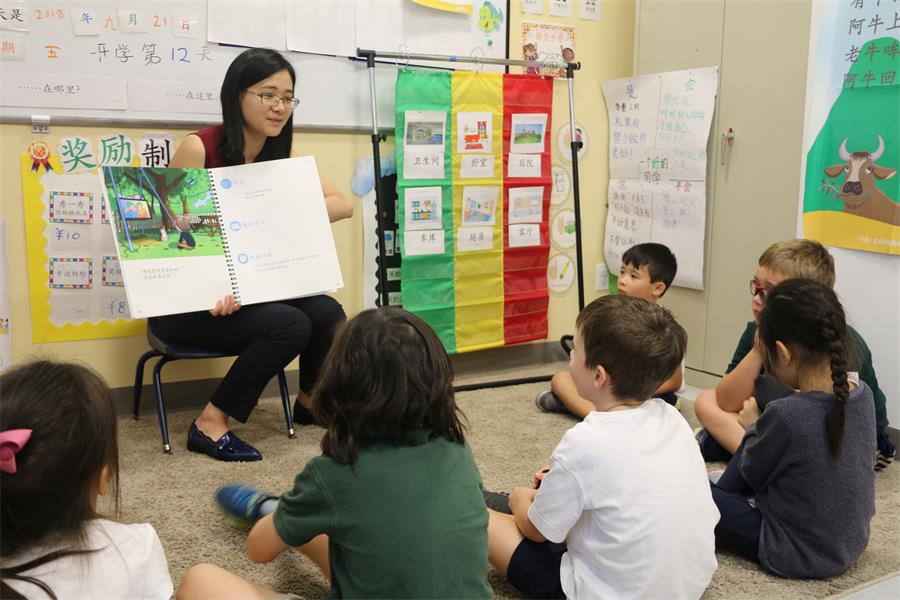
From the People's Daily App.
This is Story in the Story.
Qiu Qingjiang, 84, was shocked when he escorted his granddaughter to a village school where she works in a mountainous area in central China's Hunan Province.
The four-story school, with multi-media classrooms and brand new air-conditioners, is far different from the images the old teacher has of the 60 years he spent teaching in village schools.
He started to work at a village primary school in Xinhua County in the province in 1959. "The school was an old house built around cow and pig pens. We always smelled the stench of the livestock during class," he said.
"I was so distressed to see that a lot of students could not afford school and would drop out, so I helped them as much as I could," he added.
Today’s Story in the Story looks at how the quality of education in rural areas needs to be improved.

A newly-enrolled pupil learns to write a Chinese character "Ren" (meaning "human" in English) during an opening ceremony on the school opening day in Leidian town of Deqing county in Huzhou city, East China's Zhejiang province, Aug 29, 2018. (Photo: Xinhua)
Teaching at that "smelly" school back then was still better than the experiences faced by his father, Qiu Songshan, who served as the principal of a village school and taught Chinese in Ziyang Township in the province before the founding of the People's Republic of China in 1949.
"My father's school did not have classrooms," he recalled. "Students needed to bring stools from home and go to class at the ancestral halls of villagers.
"His salary was merely some rice that was paid to him by the students' parents," he added.
His daughter, Qiu Xianghong, began to work as a teacher in a primary school in Jiqing Township in the county in 1993 when China issued a guideline to promote nine-year compulsory education and eradicate illiteracy.
Her school, unlike her father's and grandfather's, "evolved" into a two-story building. "Poor students can receive subsidies, and nutritious lunches are available for students in all townships thanks to the country's supportive policies," she said.
Growing up with her grandfather's stories of village schools in hard times, Qiu Lingyi, 24, was ready to have a rough experience when she registered to work at Tianhua middle school in a mountainous area in the county.
"The school is well beyond my imagination and is completely different from those schools in my grandfather's stories," she said.
Apart from multi-media classrooms and air-conditioners, the school also built a new playground with a soccer pitch using funds provided by the provincial government. With digital devices equipped in the classrooms, the students can have access to online courses.

(Photo: China Daily)
Hunan invested more than 32.25 billion yuan ($4.53 billion) to upgrade infrastructure of schools in poverty-stricken areas.
Despite the progress that has been made in the last few generations, teachers in rural areas still live and work in more difficult conditions compared with their urban counterparts.
According to surveys and investigations conducted by Xinhua News Agency, even in 2015 some of the rural primary schools didn’t have electricity or tap water. Worse, teachers in rural areas usually get lower pay than their urban counterparts, as teachers’ salaries are partly related to the local financial conditions. Also, training opportunities for them are few and promotions rare.
A Xinhua survey held in August showed only 38 percent of college students were willing to become a rural teacher after graduation. As a result, many rural areas face a shortage of teachers. In the same survey, 75.6 percent of the respondents said their hometowns and the villages nearby face this problem.
Data from the Ministry of Education show there are 7 million “left-behind children” in the countryside. Without receiving quality education, such children cannot hope to get a good job, which will further widen the urban-rural gap in the overall development level.
The key to solving this problem lies in strengthening rural education. In order to do that, more favorable policies should be introduced including subsidies to raise the salaries of rural teachers and allocating more funds to build or refurbish rural schools. Such measures will encourage college graduates to work as teachers in rural areas.
(Produced by Nancy Yan Xu, Brian Lowe, Lance Crayon and Da Hang. Music by: bensound.com. Text from Xinhua and China Daily.)


